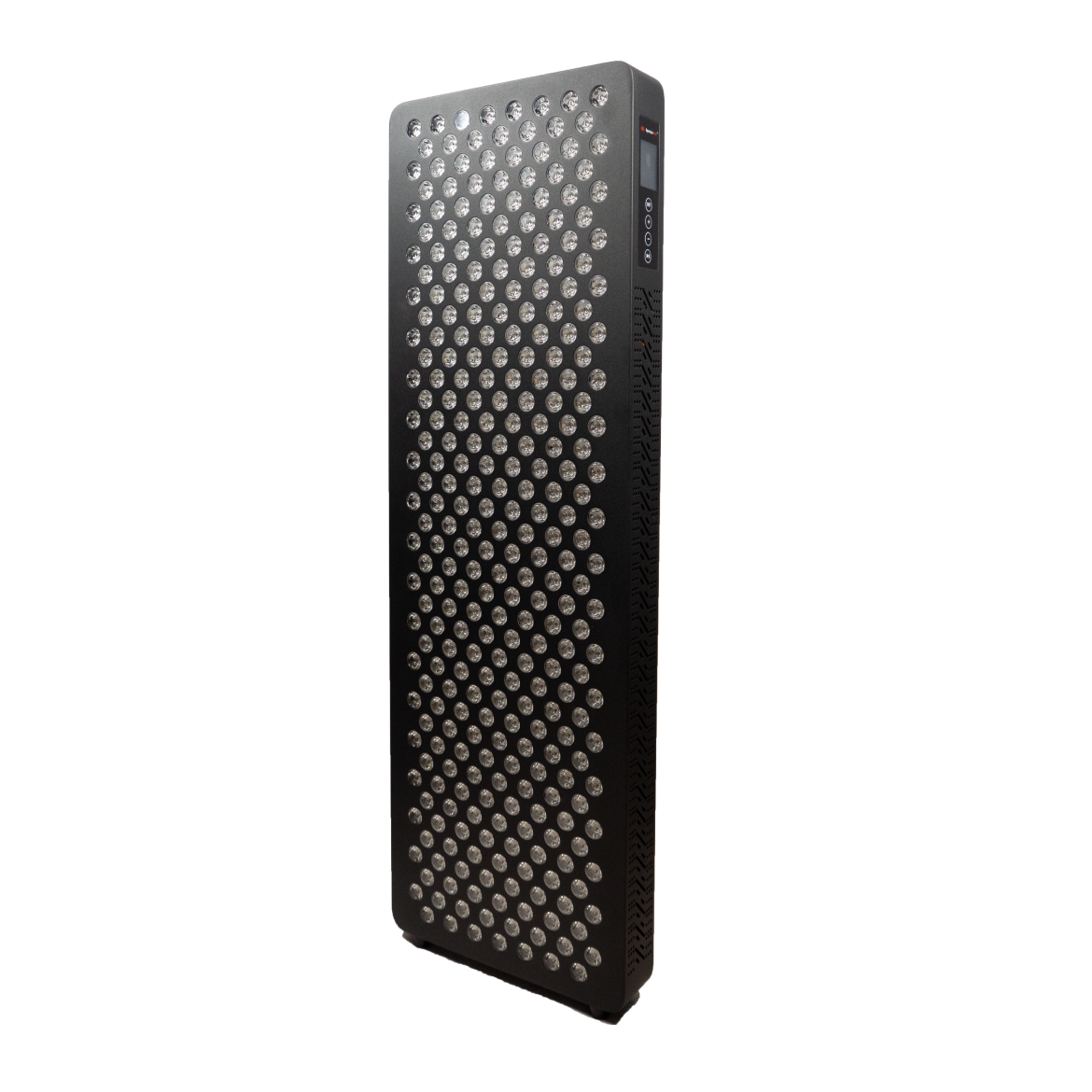Rosacea, a chronic skin condition characterised by facial redness, can be a source of frustration and affect your confidence. While there's no known cure, a range of treatments exist to minimise symptoms and improve your quality of life. Red light therapy has emerged as a promising option, and recent research suggests that near-infrared light therapy may offer additional benefits.
Understanding Rosacea:
Rosacea typically affects the central face, causing redness, visible blood vessels (telangiectasia), and sometimes bumps or pimples. While the exact cause is unknown, it's believed to be due to several factors, including:
- Genetics
- Environmental triggers (sun exposure, hot beverages, spicy foods)
- Skin mites (Demodex)
- Immune system dysfunction
How Red and Near-Infrared Light Therapies Can Help
Both red light and near-infrared (NIR) light therapies use specific wavelengths of light delivered through LED panels. These wavelengths penetrate the skin, stimulating cellular activity and promoting various benefits:
-
Red Light
- Reduced Inflammation: A key contributor to rosacea's redness and discomfort.
- Improved Blood Flow: Enhances circulation, potentially aiding in nutrient delivery and waste removal.
- Collagen Production: Boosts skin texture and elasticity, reducing fine lines and wrinkles, a common concern for many with rosacea.
-
Near-Infrared Light
- Deeper Penetration: Reaches deeper skin layers than red light, potentially targeting inflammation more profoundly.
- Tissue Repair: May promote wound healing, beneficial for rosacea-related skin damage.
- Synergistic Effect: Combined with red light, NIR might offer a broader therapeutic effect.
Research and Evidence:
Studies support the potential of both red and NIR light in managing rosacea:
- A 2017 review in the Journal of Cosmetic and Laser Dermatology found that red light therapy significantly reduces facial redness and improves skin quality in individuals with rosacea.
- A 2018 pilot study in Lasers in Surgery and Medicine suggests that the combined use of red and NIR light therapy is beneficial for reducing rosacea-related redness and improving skin appearance.
What to Expect with Red and Near-Infrared Light Therapies:
These therapies are considered safe and well-tolerated with minimal side effects. Sessions are typically short (10 minutes, 20 minutes maximum), and while improvement might be noticeable after a few sessions, optimal results will be seen with regular treatments over time. We recommend starting with a shorter duration 2-3 minutes every second day and building from there. Consult with a dermatologist or skincare professional to determine if this treatment approach is suitable for your specific rosacea condition and to discuss individual treatment plans.
Things to Consider:
Red and NIR light therapies offer a promising approach to managing rosacea symptoms, but they are not a universal solution. Keep these in mind:
- Severity: These therapies might be more effective for mild to moderate rosacea.
- Consistency: Regular treatments are crucial for sustained benefits.
- Lifestyle: Maintain a healthy lifestyle that minimises rosacea triggers.
Conclusion:
Red light therapy, potentially in combination with NIR light, presents itself as a valuable tool in managing rosacea symptoms, particularly facial redness and inflammation. By promoting healthy cellular activity, they can contribute to a calmer, more even-toned complexion. Consult with a healthcare professional to determine the ideal treatment plan for your rosacea.
Ready to Explore Red and Near-Infrared Light Therapy?
If you're interested in how red and NIR light therapy may benefit your rosacea, Spectraheal offers high-quality light therapy panels designed for safe and effective home use. Explore our products to find a solution for your skincare needs.
Disclaimer: This blog post is for general information and should not replace medical advice. Always consult with a qualified healthcare professional for personalised recommendations regarding rosacea treatment












